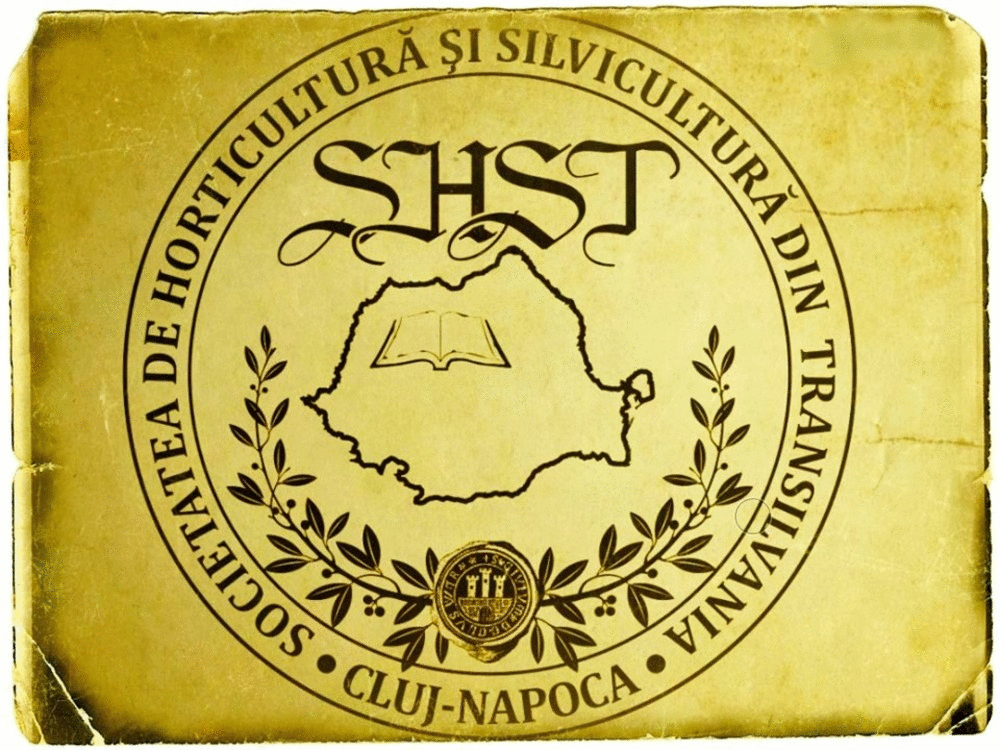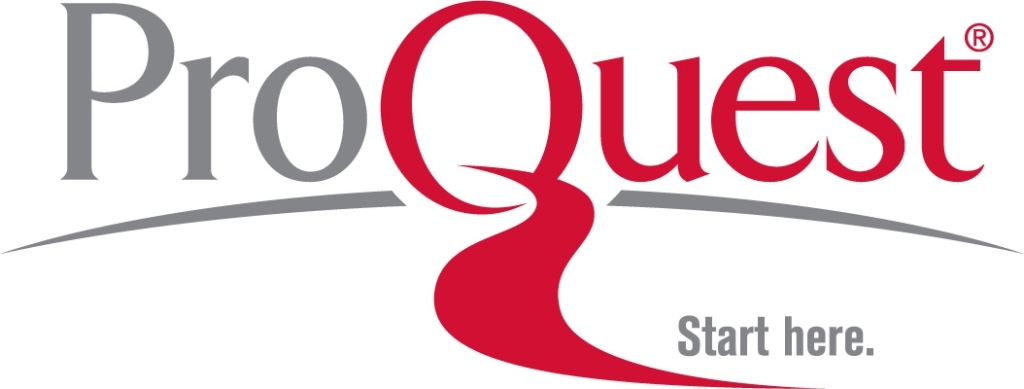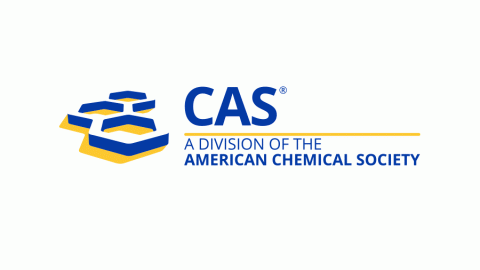Extraction of phenolic and flavonoid compounds and evaluation of their antioxidant activity in saffron anthers (Crocus sativus L.)
DOI:
https://doi.org/10.55779/nsb15411640Keywords:
DPPH free radical scavenging, extraction solvents, medicinal plant, reversed-phase HPLC, saffron flower parts, secondary metabolitesAbstract
Saffron (Crocus sativus L.) is the most expensive spice in the world and rich in a variety of bioactive compounds including phenolic acids, flavonoids, and vitamins. Saffron is used in food, cosmetics, perfumery, and dye industries due to its color, taste, aroma, and medicinal properties. The extraction of bioactive compounds imposes a constant search for economically and environmentally viable extraction strategies for higher yields including the solvent type. The research was carried out to evaluate total phenolic content (TPC), total flavonoid content (TFC), and antioxidant activity of C. sativus L. anthers using different extraction solvents including ethanol, methanol, and distilled water. The results showed that ethanol was the most effective extraction solvent type exhibiting the highest TPC (7.29 mg GAE g-1 DW), TFC (3.77 mg QE g-1 DW), and antioxidant activity of flavonoids (88%) and ascorbic acid (76.07%). Flavonoids proved to be stronger antioxidants than ascorbic acid, irrespective of solvent type, however the ethanolic extracts showed significantly higher antioxidant activity. A Reverse Phase High-Performance Liquid Chromatography method revealed that gallic acid (3.1 mg g-1), syringic acid (0.2 mg g-1), and vanillic acid (0.13 mg g-1) were the main phenolic compounds detected in the dried anther ethanolic extracts, while quercetin (2.13 mg g-1), pyrogallol (1.73 mg g-1), kaempferol (1.2 mg g-1), rutin (0.2 mg g-1), and tricin (0.1 mg g-1) the main flavonoid compounds. Thus, apart from the spice, constituted by the red stigmas, the production of other flower parts such as the anthers, so far considered agricultural waste can constitute a rich source of bioactive compounds of high antioxidant potential by setting quality standards for new products’ development and ensuring better valorization of saffron’s bioresidues in Mashhad region of Iran.
Metrics
References
Abu-Izneid T, Rauf A, Khalil AA, Olatunde A, Khalid A, Alhumaydhi FA, … Rengasamy KRR (2022). Nutritional and health beneficial properties of saffron (Crocus sativus L.): A comprehensive review. Critical Reviews in Food Science and Nutrition 62(10):2683-2706. https://doi.org/10.1080/10408398.2020.1857682
Agati G, Azzarello E, Pollastri S, Tattini M (2012). Flavonoids as antioxidants in plants: Location and functional significance. Plant Science 196:67-76. https://doi.org/10.1016/j.plantsci.2012.07.014
Ahmad M, Zaffar G, Mir SD, Dar ZA, Dar NA, Arshid A, … Habib M (2013). Sustainable saffron (Crocus sativus L.) production - A review. International Journal of Agriculture - Photon Foundation 124:184-199.
Aktypis A, Christodoulou ED, Manolopoulou E, Georgala A, Daferera D, Polysiou M (2018). Fresh ovine cheese supplemented with saffron (Crocus sativus L.): Impact on microbiological, physicochemical, antioxidant, color and sensory characteristics during storage. Small Ruminant Research 167:32-38. https://doi.org/10.1016/j.smallrumres.2018.07.016
Armellini R, Peinado I, Pittia P, Scampicchio M, Heredia A (2018). Effect of saffron (Crocus sativus L.) enrichment on antioxidant and sensorial properties of wheat flour pasta. Food Chemistry 254:55-63. https://doi.org/10.1016/j.foodchem.2018.01.174
Baba SA, Malik AH, Wani ZA, Mohiuddin T, Shah Z, Abbas N, Ashraf N (2015). Phytochemical analysis and antioxidant activity of different tissue types of Crocus sativus and oxidative stress alleviating potential of saffron extract in plants, bacteria, and yeast. South African Journal of Botany 99:80-87. https://doi.org/10.1016/j.sajb.2015.03.194
Bellachioma L, Marini E, Magi G, Pugnaloni A, Facinelli B, Rocchetti G, … Ferretti G (2022a). Phytochemical profiling, antibacterial and antioxidant properties of Crocus sativus flower: A comparison between tepals and stigmas. Open Chemistry 20:431-443. https://doi.org/10.1515/chem-2022-0155
Bellachioma L, Rocchetti G, Morresi C, Martinelli E, Lucin L, Ferretti G, … Bacchetti T (2022b). Valorisation of Crocus sativus flower parts for herbal infusions: Impact of brewing conditions on phenolic profiling, antioxidant capacity and sensory traits. International Journal of Food Science and Technology 57:3838-3849. https://doi.org/10.1111/ijfs.15713
Caser M, Demasi S, Stelluti S, Donno D, Scariot V (2020). Crocus sativus L. cultivation in alpine environments: Stigmas and tepals as source of bioactive compounds. Agronomy 10:1473. https://doi.org/10.3390/agronomy10101473
Chichiriccò G, Ferrante C, Menghini L, Recinella L, Leone S, Chiavaroli A, … Orlando G (2019). Crocus sativus by-products as sources of bioactive extracts: Pharmacological and toxicological focus on anthers. Food and Chemical Toxicology 126:7-14. https://doi.org/10.1016/j.fct.2019.01.040
Esmaeili N, Ebrahimzadeh H, Abdi K, Safarian S (2011). Determination of some phenolic compounds in Crocus sativus L. corms and its antioxidant activities study. Pharmacognosy Magazine 7(25):74-80. https://doi.org/10.4103/0973-1296.75906
Fardaghi AA, Es-haghia A, Feizyb J, Lakshmipathy R (2021). Antioxidant capacity and chemical composition of different parts of saffron flowers. Journal of Food and Bioprocess Engineering 4(1):69-74. https://doi.org/10.22059/jfabe.2021.316326.1078
Fernandez JA (2007). Genetic resources of saffron and allies (Crocus spp.). Acta Horticulturae 739:167-185. https://doi.org/10.17660/ActaHortic.2007.739.22
Ghanbari J, Khajoei-Nejad G, Erasmus SW, van Ruth SM (2019). Identification and characterization of volatile fingerprints of saffron stigmas and petals using PTR-TOF-MS: Influence of nutritional treatments and corm provenance. Industrial Crops and Products 141:111803. https://doi.org/10.1016/j.indcrop.2019.111803
Ghasemzadeh A, Jaafar HZE, Rahmat A (2010). Antioxidant activities, total phenolics and flavonoids content in two varieties of Malaysia young ginger (Zingiber officinale Roscoe). Molecules 15:4324-4333. https://doi.org/10.3390/molecules15064324
Gigliobianco MR, Cortese M, Peregrina DV, Villa C, Lupidi G, Pruccoli L, … Di Martino P (2021). Development of new extracts of Crocus sativus L. by-product from two different Italian regions as new potential active ingredient in cosmetic formulations. Cosmetics 8:51. https://doi.org/10.3390/cosmetics8020051
Gismondi A, Serio M, Canuti L, Canini A (2012). Biochemical, antioxidant and antineoplastic properties of Italian saffron (Crocus sativus L.). American Journal of Plant Sciences 3(11):1573-1580. http://dx.doi.org/10.4236/ajps.2012.311190
Hadizadeh F, Mohajeri SA, Seifi M (2010). Extraction and purification of crocin from saffron stigmas employing a simple and efficient crystallization method. Pakistan Journal of Biological Sciences 13(14):691-698. https://doi.org/10.3923/pjbs.2010.691.698
Hashemi Gahruie H, Parastouei K, Mokhtarian M, Rostami H, Niakousari M, Mohsenpour Z (2020). Application of innovative processing methods for the extraction of bioactive compounds from saffron (Crocus sativus) petals. Journal of Applied Research on Medicinal and Aromatic Plants 19:100264. https://doi.org/10.1016/j.jarmap.2020.100264
Horozić E, Kolarević L, Zukić A, Bjelošević D, Mekić L, Ademović Z, Husejnagić D (2019). Effects of extraction solvent and technique on the antioxidant and antimicrobial activity of spring saffron (Crocus vernus (L.) Hill). Acta Medica Saliniana 49(2):19-23. https://doi.org/10.5457/503
Hossein Goli SA, Mokhtari F, Rahimmalek M (2012). Phenolic compounds and antioxidant activity from saffron (Crocus sativus L.) petal. Journal of Agricultural Sciences 4(10):175-181. https://dx.doi.org/10.5539/jas.v4n10p175
Jadouali SM, Bouzoubaâ Z, Majourhat K, Mamouni R, Gharby S, Atifi H (2017). Polyphenols content, flavonoids and antioxidant activity of petals, stamens, styles and whole flower of Crocus sativus of Taliouine. Acta Horticulturae 1184:301-308. https://doi.org/10.17660/ActaHortic.2017.1184.43
Jadouali SM, Atifi H, Mamouni R, Majourhat K, Bouzoubaâ Z, Laknifli A, Faouzi A (2019). Chemical characterization and antioxidant compounds of flower parts of Moroccan Crocus sativus L. Journal of the Saudi Society of Agricultural Sciences 18(4):476-480. https://doi.org/10.1016/j.jssas.2018.03.007
Kalinowska M, Gryko K, Wróblewska AM, Jabłonska-Trypuc A, Karpowicz D (2020). Phenolic content, chemical composition and anti-pro-oxidant activity of Gold Milenium and Papierowka apple peel extracts. Scientific Reports 10:14951. https://doi.org/10.1038/s41598-020-71351-w
Karimi E, Oskoueian E, Hendra R, Jaafar HZ (2010). Evaluation of Crocus sativus L. stigma phenolic and flavonoid compounds and its antioxidant activity. Molecules 15:6244-6256. https://doi.org/10.3390/molecules15096244
Koocheki A (2020). Chapter 17 - Dehydration of saffron stigmas. In: Koocheki A, Khajeh-Hosseini M (Eds). Saffron: Science, Technology and Health. Woodhead Publishing Series in Food Science, Technology and Nutrition, Saffron Woodhead Publishing, Elsevier, Amsterdam, The Netherlands pp 291–299. https://doi.org/10.1016/B978-0-12-818638-1.00017-4
Kosar M, Goger F, Baser KHC (2011). In vitro antioxidant properties and phenolic composition of Salvia halophila hedge from turkey. Food Chemistry 129:374-379. http://dx.doi.org/10.1016/j.foodchem.2011.04.086
Kumar A, Devi M, Kumar R, Kumar S (2022). Introduction of high-value Crocus sativus (saffron) cultivation in non-traditional regions of India through ecological modelling. Scientific Reports 12(1):11925. http://dx.doi.org/10.1038/s41598-022-15907-y
Lachguer K, El Merzougui S, Boudadi I, Laktib A, El Caid MB, Ramdan B, … Serghini MA (2022). Major phytochemical compounds, in vitro antioxidant, antibacterial, and antifungal activities of six aqueous and organic extracts of Crocus sativus L. flower waste. Waste and Biomass Valorization 14:1571-1587. https://doi.org/10.1007/s12649-022-01964-x
Lahmass I, Lamkami T, Delporte C, Sikdar S, Van Antwerpen P, Saalaoui E, Megalizzi V (2017). The waste of saffron crop, a cheap source of bioactive compounds. Journal of Functional Foods 35:341-351. https://doi.org/10.1016/j.jff.2017.05.057
Makhlouf H, Saksouk M, Habib J, Chahine R (2011). Determination of antioxidant activity of saffron taken from the flower of Crocus sativus grown in Lebanon. African Journal of Biotechnology 10:8093-8100. http://dx.doi.org/10.5897/AJB11.406
Maqbool Z, Arshad MS, Ali A, Aziz A, Khalid W, Afzal MF, … Lorenzo JM (2022). Potential role of phytochemical extract from saffron in development of functional foods and protection of brain-related disorders. Oxidative Medicine and Cellular Longevity 6480590:14 pages. https://doi.org/10.1155/2022/6480590
Menghini L, Leporini L, Vecchiotti G, Locatelli M, Carradori S, Ferrante C, … Orlando G (2018). Crocus sativus L. stigmas and byproducts: Qualitative fingerprint, antioxidant potentials and enzyme inhibitory activities. Food Research International 109:91-98. https://doi.org/10.1016/j.foodres.2018.04.028
Moradi A, Zarinkamar F, Caretto S, Azadi P (2018). Influence of thidiazuron on callus induction and crocin production in corm and style explants of Crocus sativus L. Acta Physiologiae Plantarum 40:185. https://doi.org/10.1007/s11738-018-2760-2
Mzabri I, Charif K, Rimani M, Kouddane N, Boukroute A, Berrichi A (2021a). History, biology, and culture of Crocus sativus: Overview and perspectives. Arabian Journal of Chemical and Environmental Research 08:1-28. http://www.mocedes.org/ajcer/volume8/AJCER-01-Mzabri-2021.pdf
Mzabri I, Rimani M, Charif K, Otouya S, Kouddane N, Berrichi A (2021b). Effect of thermal forcing of corms on the flowering of saffron (Crocus sativus L.). Black Sea Journal of Agriculture 4(2):66-70. https://doi.org/10.47115/bsagriculture.841263
Ozkan K, Bayram Y, Karasu S, Karadag A, Sagdic O (2021). Chapter 3 - Extraction of bioactive compounds from saffron species. In: Galanakis CM (Ed). Saffron. Academic Press, pp 99-141. https://doi.org/10.1016/B978-0-12-821219-6.00003-8
Proestos C, Chorianopoulos N, Nychas GJE, Komaitis M (2005). RP‐HPLC analysis of the phenolic compounds of plant extracts: Investigation of their antioxidant capacity and antimicrobial activity. Journal of Agricultural and Food Chemistry 53:1190-1195. https://doi.org/10.1021/jf040083t
Rahaman A, Kumari A, Farooq MA, Zeng XA, Hassan S, Khalifa I, … Wajid MA (2021). Novel extraction techniques: An effective way to retrieve the bioactive compounds from saffron (Crocus sativus). Food Reviews International 37:1-29. https://doi.org/10.1080/87559129.2021.1967377
Rahaiee S, Moini S, Hashemi M, Shojaosadati SA (2015). Evaluation of antioxidant activities of bioactive compounds and various extracts obtained from saffron (Crocus sativus L.): A review. Journal of Food Science and Technology 52(4):1881-1888. https://doi.org/10.1007/s13197-013-1238-x
Rahimi M (2015). Chemical and medicinal properties of saffron. Bulletin of Environment, Pharmacology and Life Sciences 4:69-81.
Rashmi HB, Negi PS (2020). Phenolic acids from vegetables: A review on processing stability and health benefits. Food Research International 136:109298. https://doi.org/10.1016/j.foodres.2020.109298
Rodriguez-Ruiz V, Barzegari A, Zuluaga M, Zunooni-Vahed S, Rahbar-Saadat Y, Letourneur D, … Pavon-Djavid G (2016). Potential of aqueous extract of saffron (Crocus sativus L.) in blocking the oxidative stress by modulation of signal transduction in human vascular endothelial cells. Journal of Functional Foods 26:123-134. https://doi.org/10.1016/j.jff.2016.07.003
Serghini MA, Lagram K, El Caid MB, Lachheb M, Atyane LH, Salaka L, Karra Y (2017). Saffron (Crocus sativus): Current state of scientific research. Acta Horticulturae 1184:79-86. https://doi.org/10.17660/ActaHortic.2017.1184.12
Stelluti S, Caser M, Demasi S, Scariot V (2021). Sustainable processing of floral bio-residues of saffron (Crocus sativus L.) for valuable biorefinery products. Plants 10:523. https://doi.org/10.3390/plants10030523
Sun C, Nile SH, Zhang Y, Qin L, El-Seedi HR, Daglia M, Kai G (2020). Novel insight into utilization of flavonoid glycosides and biological properties of saffron (Crocus sativus L.) flower byproducts. Journal of Agricultural and Food Chemistry 68(39):10685-10696. https://dx.doi.org/10.1021/acs.jafc.0c04076
Suvarchala R, Ganga Raju M, Anusha MV, Gaikwad A, Pulate C, Mahajan K, Tare H (2022). Investigation of potential antiurolithiatic activity and in silico docking studies of Karpura shilajit. International Journal of Health Sciences 6(S4):8900-8916. https://doi.org/10.53730/ijhs.v6nS4.11875
Termentzi A, Kokkalou E (2008). LC-DAD-MS (ESI+) analysis and antioxidant capacity of Crocus sativus petal extracts. Planta Medica 74(5):573-581. http://dx.doi.org/10.1055/s-2008-1074498
Terpinc P, Ceh B, Ulrih NP, Abramovĭc H (2012). Studies of the correlation between antioxidant properties and the total phenolic content of different oil cake extracts. Industrial Crops and Products 39:210-217. https://doi.org/10.1016/j.indcrop.2012.02.023
Turrini F, Donno D, Beccaro GL, Zunin P, Pittaluga A, Boggia R (2019). Pulsed ultrasound‐assisted extraction as an alternative method to conventional maceration for the extraction of the polyphenolic fraction of Ribes nigrum buds: A new category of food supplements proposed by the finnover project. Foods 8:466. https://doi.org/10.3390/foods8100466
Yousuf B, Qadri OS, Srivastava AK (2018). Recent developments in shelf-life extension of fresh-cut fruits and vegetables by application of different edible coatings: A review. LWT Food Science and Technology 89:198-209. https://doi.org/10.1016/j.lwt.2017.10.051
Xie PJ, Huang LX, Zhang CH, Zhang YL (2015). Phenolic compositions, and antioxidant performance of olive leaf and fruit (Olea europaea L.) extracts and their structure-activity relationships. Journal of Functional Foods 16:460-471. https://doi.org/10.1016/j.jff.2015.05.005
Wang T, Li Q, Bi KS (2018). Bioactive flavonoids in medicinal plants: Structure, activity and biological fate. Asian Journal of Pharmaceutical Sciences 13(1):12-23. https://doi.org/10.1016/j.ajps.2017.08.004
Zhang A, Shen Y, Cen M, Hong X, Shao Q, Chen Y, Zheng B (2019). Polysaccharide and crocin contents, and antioxidant activity of saffron from different origins. Industrial Crops and Products 133:111-117. https://doi.org/10.1016/j.indcrop.2019.03.009
Downloads
Published
How to Cite
Issue
Section
License
Copyright (c) 2023 Huda Enaya MAHOOD, Ali Amer DAHHAM, Virginia SARROPOULOU, Thiresia-Teresa TZATZANI

This work is licensed under a Creative Commons Attribution 4.0 International License.
Papers published in Notulae Scientia Biologicae are Open-Access, distributed under the terms and conditions of the Creative Commons Attribution License.
© Articles by the authors; licensee SMTCT, Cluj-Napoca, Romania. The journal allows the author(s) to hold the copyright/to retain publishing rights without restriction.
License:
Open Access Journal - the journal offers free, immediate, and unrestricted access to peer-reviewed research and scholarly work, due SMTCT supports to increase the visibility, accessibility and reputation of the researchers, regardless of geography and their budgets. Users are allowed to read, download, copy, distribute, print, search, or link to the full texts of the articles, or use them for any other lawful purpose, without asking prior permission from the publisher or the author.













.png)















